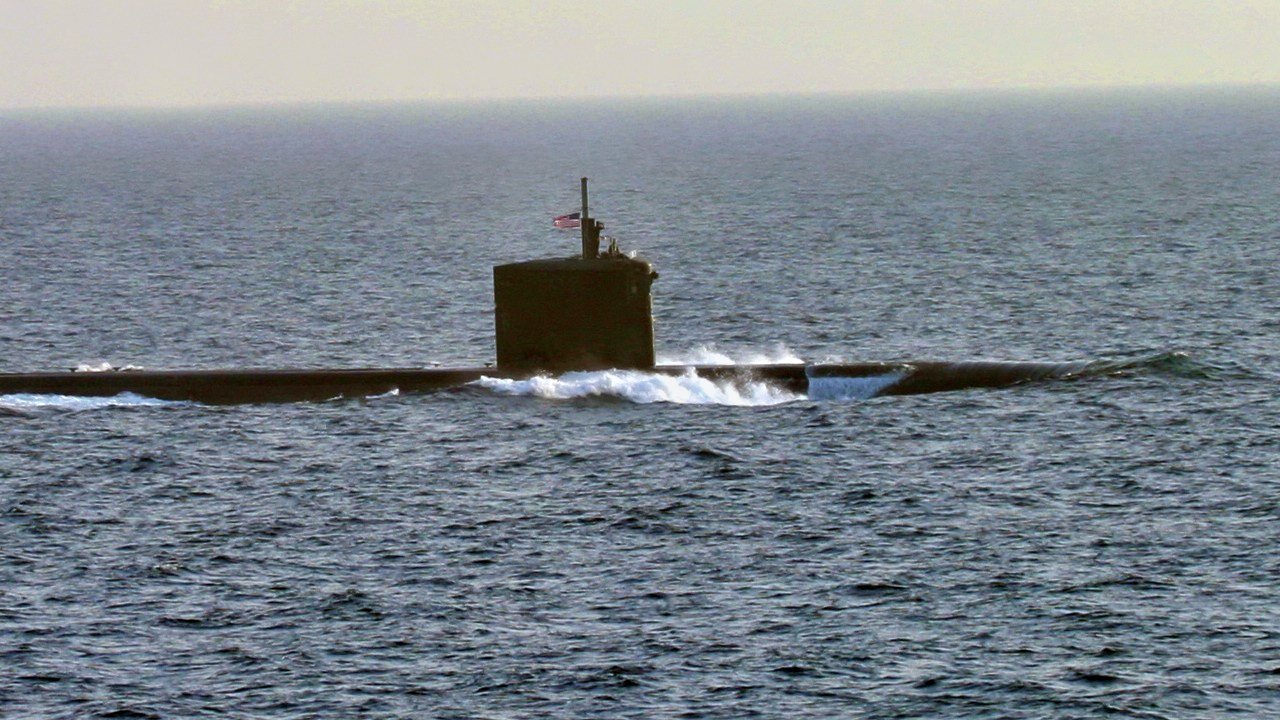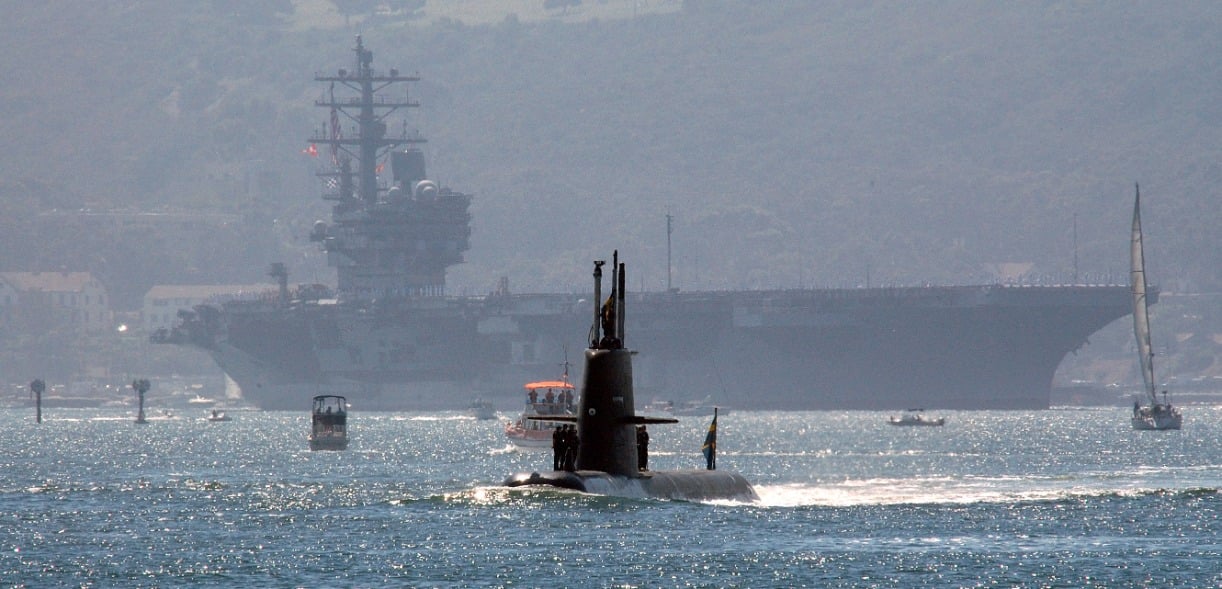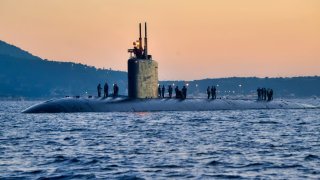The U.S. Navy Needs Diesel Submarines Now
The U.S. Navy's reliance on expensive, complex nuclear-powered submarines is under scrutiny as global rivals like China and Russia expand their naval capabilities. Diesel submarines could be a smart alternative.
Summary and Key Points: The U.S. Navy's reliance on expensive, complex nuclear-powered submarines is under scrutiny as global rivals like China and Russia expand their naval capabilities.

-Despite the proven effectiveness of diesel-electric submarines—used successfully by allies like Japan, Sweden, and Israel—the U.S. has focused on nuclear subs, which are costly and slow to produce.
-Diesel-electric subs offer a quieter, more affordable alternative that could quickly bolster America's undersea fleet. By purchasing these submarines from advanced allies, the U.S. could enhance its naval power and meet current challenges more effectively, rather than waiting for long-term solutions.
The U.S. Navy: Time for Diesel Submarines?
The United States Navy has fallen in love, like the rest of the Armed Forces of the United States, with technological wizardry and expensive programs to augment, indeed replace, less sophisticated, affordable, and plentiful systems. America’s wünderwaffe is going strong today.
Yet, the U.S. military is quantifiably the weakest it has been since the interwar years. One key system that the Navy will need to defend against America’s rising great power rivals is the submarine. And, thanks to long-running problems with America’s failing defense industrial base, as well as the increasing cost of complex systems, America’s vital submarine capability is insufficient to meeting the challenges America faces today.
There is no amount of funding that can address the bottlenecks in our defense industrial base. Nothing short of a complete overhaul of our infrastructure will make U.S. capabilities meet the needs of the U.S. Armed Forces. Despite having spoken wistfully of the need to restore America as the “arsenal of democracy,” no political leader—not former President Donald Trump or current President Joe Biden—has managed to revitalize the dying arsenal of democracy. In fact, as multiple crises across various fronts pull America’s limited supplies of critical systems, ammunition, and personnel to their breaking points, almost nothing has been proffered in the way of a reliable solution in the near term.
And no one in Washington thinks about the long-term anymore (and whenever they do, the bureaucrats usually get it wrong).
The threats, however, persist.
What America Really Needs for Subs
The need for a large and capable submarine force remains. We keep hearing about the glories of America’s allies. Although, increasingly, these alliances seem to be pretty one-sided: America gives and gives, while the allies take and take. But America does have competent and technologically advanced allies.
Many of these allies, such as Sweden or France, routinely and unapologetically rely upon diesel-electric submarines to meet their strategic needs.
This is not because America’s allies are technologically inferior to the Americans. Quite the contrary. It’s usually because America’s allies don’t want to spend the kind of money, time, and resources building the entire fleet of nuclear-powered submarines that the Americans have built.
Even the recent Australia-United Kingdom-United States (AUKUS) submarine deal demands that Australia purchase, and the Americans and British provide, nuclear-powered submarines. Thus, defense contractors are happy because these are long-term contracts that are worth far more than if the contracts were for diesel-electric submarines.
In the meantime, America’s rivals—notably China—grow stronger and their own navies grow larger and more competent. By the time these proposed new nuclear-powered submarines make it to the battlefield, the facts on the ground may have fundamentally changed in China’s favor. What’s needed, therefore, are solutions in the here and now. Not theoretical solutions for 2040 and beyond (which is what the Pentagon is planning for).
The fact of the matter is that diesel-electric subs work. Indeed, these were the kind of submarines (although much less sophisticated than the diesel-electric subs operated by multiple modern navies today), that won the Pacific Theater of World War II for the Americans. After that conflict ended, though, the U.S. Navy was bitten by the nuclear bug. It’s an understandable trend. Nuke-powered subs are better than their conventional, diesel-electric submarine older brothers.
But they’re expensive and take long to build—and require long stays in already overburdened U.S. shipyards.
The Case for Diesel-Electric Submarines
Besides, a coterie of diesel-electric submarines has proven their worth against their nuclear-powered brethren. More importantly, diesel-electric subs have proven their mettle in a variety of instances against nuclear-powered U.S. aircraft carriers!
That’s because diesel-electric submarines, on top of being cheaper than nuclear-powered boats, are usually quieter. They’re harder to pick up on sonar. An ancient Chinese Song-class diesel-electric submarine infamously popped up within torpedo firing range of the USS Kitty Hawk when the nuclear-powered carrier was on maneuvers in the Pacific.
Similarly, a Swedish Gotland-class diesel-electric submarine got within firing range of an American aircraft carrier during joint training exercises. The crew of the American carrier was none the wiser until it was too late.

A French diesel-electric submarine did the same to an American flattop during joint training between the U.S. and French navies.
The Israelis have also proven that diesel-electric submarines are more than capable of providing for their national defense. While never officially acknowledged, everyone understands that Israel possesses a flotilla of German-built, diesel-electric Dolphin-class submarines that can carry nuclear-tipped cruise missiles. Israel is a highly sophisticated nation that could easily build nuclear-powered boats. They chose not to because diesel-electric subs are cheaper, easier to maintain, and still get the job done.
During World War II, America’s submarine force became a refined and essential element of America’s maritime defense. While the nuclear-powered sub had yet to be invented, and there were real limitations of diesel-electric subs back then, the fact remains that the United States was able to mass produce these subs and overwhelm the Japanese at sea. America’s rivals today, such as China and Russia, routinely rely upon a mixed force of diesel-electric and nuclear-powered subs to meet their strategic needs.
Why can’t America do this as well?
Here’s What America’s Allies Can Do for Us
The best part of this entire story is that America’s overburdened shipyards do not need to build diesel-electric subs from scratch. Washington should simply purchase a tranche of diesel-electric subs from one of America’s various advanced allies. James Holmes believes that the Japanese-built Soryu-class diesel-electric sub would get the job done.
But why stop there?
We should purchase a hodgepodge of various diesel-electric subs from Japan, Sweden, and France. Let our allies help us out. America needs to augment its submarine force with simple numbers. American allies are more than capable of helping us with this task.

After all, quantity has its own quality.
Author Experience and Expertise: Brandon J. Weichert
Brandon J. Weichert, a National Interest national security analyst, is a former Congressional staffer and geopolitical analyst who is a contributor at The Washington Times, the Asia Times, and The-Pipeline. He is the author of Winning Space: How America Remains a Superpower, Biohacked: China’s Race to Control Life, and The Shadow War: Iran’s Quest for Supremacy. His next book, A Disaster of Our Own Making: How the West Lost Ukraine, is due October 22 from Encounter Books. Weichert can be followed via Twitter @WeTheBrandon.
All images are Creative Commons or Shutterstock. All photos are of various submarine styles.
From the Vault
Russia Freaked Out: Why the U.S. Navy 'Unretired' the Iowa-Class Battleships
Battleship vs. Battlecruiser: Iowa-Class vs. Russia's Kirov-Class (Who Wins?)


